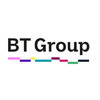Filter interviews by
Alcatel-Lucent Software Engineer Interview Questions and Answers
9 Interview questions
OSI has 7 layers while TCP/IP has 4 layers.
OSI model is theoretical while TCP/IP is practical
OSI has a dedicated session layer while TCP/IP does not
TCP/IP combines the presentation and session layers into one
OSI is more complex and rarely used in practice
TCP/IP is the standard for internet communication
Program to reverse a string in any language
Declare a string variable
Loop through the string in reverse order
Append each character to a new string variable
Return the new string variable
Function overloading is having multiple functions with the same name but different parameters. Function overriding is having a derived class function with the same name and parameters as the base class function.
Function overloading is a compile-time polymorphism concept while function overriding is a runtime polymorphism concept.
Function overloading is used to provide multiple ways to call a function with differen...
Yes, I have worked extensively on LINUX.
I have experience in LINUX system administration and shell scripting.
I have developed applications using C++ and Python on LINUX platform.
I have worked with various LINUX distributions such as Ubuntu, CentOS, and Red Hat.
I am familiar with LINUX command line tools and utilities.
I have worked with LINUX servers and virtual machines.
Routers direct traffic between networks while switches connect devices within a network.
Routers use IP addresses to direct traffic between networks
Routers can prioritize traffic based on Quality of Service (QoS)
Switches use MAC addresses to connect devices within a network
Switches can create virtual LANs (VLANs) to segment a network
Example of a router: Cisco ISR 4000 series
Example of a switch: Cisco Catalyst 2960 ...
Factorial and Fibonacci can be calculated with or without recursion.
Factorial can be calculated using a loop or recursion.
Fibonacci can be calculated using a loop or recursion.
Recursion can lead to stack overflow for large inputs.
Iterative solutions are more efficient for large inputs.
OSI network model has 7 layers. Layer 2 is Data Link layer and Layer 3 is Network layer.
Layer 2 protocols include Ethernet, Wi-Fi, and PPP
Layer 3 protocols include IP, ICMP, and ARP
Data Link layer provides error-free transmission over physical layer
Network layer provides logical addressing and routing of data packets
Layer 2 devices operate at the data link layer, while Layer 3 devices operate at the network layer.
Layer 2 devices include switches and bridges.
Layer 3 devices include routers and layer 3 switches.
Layer 2 devices forward frames based on MAC addresses.
Layer 3 devices forward packets based on IP addresses.
Process scheduling is the method by which the operating system decides which process to run first.
Process scheduling is an important part of operating system design.
It involves deciding which process to run first, based on various criteria such as priority, time slice, and resource availability.
There are several scheduling algorithms, including First-Come-First-Serve (FCFS), Round Robin, and Priority Scheduling.
FC...
Alcatel-Lucent Software Engineer Interview Experiences
4 interviews found
Interview Questionnaire
6 Questions
- Q1. Introduce yourself
- Ans.
I am a software engineer with experience in developing web applications and mobile apps.
I have a degree in Computer Science
I am proficient in programming languages such as Java, Python, and JavaScript
I have experience working with frameworks such as React and Angular
I have developed several web applications and mobile apps, including a social media platform and a fitness tracking app
- Q2. OSI network model and protocols on Layer 2 and Layer 3
- Ans.
OSI network model has 7 layers. Layer 2 is Data Link layer and Layer 3 is Network layer.
Layer 2 protocols include Ethernet, Wi-Fi, and PPP
Layer 3 protocols include IP, ICMP, and ARP
Data Link layer provides error-free transmission over physical layer
Network layer provides logical addressing and routing of data packets
- Q3. Layer 2 and Layer 3 devices (hardware used)
- Ans.
Layer 2 devices operate at the data link layer, while Layer 3 devices operate at the network layer.
Layer 2 devices include switches and bridges.
Layer 3 devices include routers and layer 3 switches.
Layer 2 devices forward frames based on MAC addresses.
Layer 3 devices forward packets based on IP addresses.
- Q4. In detailed working of Routers(with practical example).Its difference with a switch
- Ans.
Routers direct traffic between networks while switches connect devices within a network.
Routers use IP addresses to direct traffic between networks
Routers can prioritize traffic based on Quality of Service (QoS)
Switches use MAC addresses to connect devices within a network
Switches can create virtual LANs (VLANs) to segment a network
Example of a router: Cisco ISR 4000 series
Example of a switch: Cisco Catalyst 2960 serie...
- Q5. Practical example on difference between OSI and TCP/IP network model
- Ans.
OSI has 7 layers while TCP/IP has 4 layers.
OSI model is theoretical while TCP/IP is practical
OSI has a dedicated session layer while TCP/IP does not
TCP/IP combines the presentation and session layers into one
OSI is more complex and rarely used in practice
TCP/IP is the standard for internet communication
- Q6. Program on string reversal (any language)
- Ans.
Program to reverse a string in any language
Declare a string variable
Loop through the string in reverse order
Append each character to a new string variable
Return the new string variable
Interview Preparation Tips
Experience: It was a general + technical aptitude test of medium level difficulty.Speed and accuracy do matter here to crack this round. Basic theoretical concepts learnt during B.Tech were checked in this round.
Tips: Before the Selection process, do brush up on basics of important core subjects of syllabus.
Duration: 90 minutes
Total Questions: 70
Round: Technical Interview
Experience: Started with basic questions on networking and communication concepts.Slowly progressed to in-detail questions.Have a strong hold on the subject you like and Final Year project was emphasized.
Tips: Dont hassle if you dont know the answer for some questions.Keep yourself cool.
General Tips: 1: Be Confident.
2: Keep Smiling.
3: Do not be Panic.
4: Remember they are here to hire you but not reject you.
5: Do not loose hope.
6: Believe at yourself.
7: Start preparing early.
8: Do demo interviews with your friend.
Skills: Speed, Programming, Computer networks knowledge, Accuracy
College Name: VIT VELLORE
Motivation: Every body joins a comapny for making a software or earning money. But I was always motivated to MAKE MONEY. I have taken this job because they have very extensive work in Share Market and they have lots of MBA from IIM's, Lots of CAs, CS. Thats why i have choosen Edelweiss. I have rejected epic System USA for this profile.
Skills evaluated in this interview
Team work - how to participate, foster etc.
(2 Questions)
- Q1. Ambition and how to work towards it
- Q2. How to function in a team
I applied via Referral and was interviewed before May 2023. There were 4 interview rounds.
(1 Question)
- Q1. Basics of networking , project related questions
(1 Question)
- Q1. Network troubleshooting questions
(1 Question)
- Q1. Brief explanation of the project
(1 Question)
- Q1. CTC discussion and project explanation
Interview Questionnaire
8 Questions
- Q1. Str[]=
- Ans.
str[] is an array of strings.
str[] can hold multiple strings in a single variable.
Each element in str[] is a string.
str[] can be accessed using index numbers.
- Q2. Factorial and Fibonacci with and without recurssion
- Ans.
Factorial and Fibonacci can be calculated with or without recursion.
Factorial can be calculated using a loop or recursion.
Fibonacci can be calculated using a loop or recursion.
Recursion can lead to stack overflow for large inputs.
Iterative solutions are more efficient for large inputs.
- Q3. Process Scheduling in OS
- Ans.
Process scheduling is the method by which the operating system decides which process to run first.
Process scheduling is an important part of operating system design.
It involves deciding which process to run first, based on various criteria such as priority, time slice, and resource availability.
There are several scheduling algorithms, including First-Come-First-Serve (FCFS), Round Robin, and Priority Scheduling.
FCFS is...
- Q4. Have you worked on LINUX
- Ans.
Yes, I have worked extensively on LINUX.
I have experience in LINUX system administration and shell scripting.
I have developed applications using C++ and Python on LINUX platform.
I have worked with various LINUX distributions such as Ubuntu, CentOS, and Red Hat.
I am familiar with LINUX command line tools and utilities.
I have worked with LINUX servers and virtual machines.
- Q5. We have given a string and we have to tell the output of printf(
- Q6. Difference in Function overloading and overriding
- Ans.
Function overloading is having multiple functions with the same name but different parameters. Function overriding is having a derived class function with the same name and parameters as the base class function.
Function overloading is a compile-time polymorphism concept while function overriding is a runtime polymorphism concept.
Function overloading is used to provide multiple ways to call a function with different par...
- Q7. OOPs Concepts
- Q8. Projects (He was interested in programming on linux so be familiar with linux)
Interview Preparation Tips
Experience: There were many sections :
1. Aptitute
2. OS
3. Network
4. Java
5.DS
6. C
College Name: NA
Skills evaluated in this interview
Top trending discussions






Interview questions from similar companies

Interview Questionnaire
1 Question
- Q1. Questions asked about products knowledge, roles and responsibilities
Interview Preparation Tips
Experience: Questions asked about products knowledge, roles and responsibilities

Interview Questionnaire
3 Questions
- Q1. The questions primarily started with discussion on my internships and minor project
- Q2. Many questions were asked about OOPs concepts like virtual function, multiple inheritance, function overloading etc you are supposed to define and implement all of them on paper
- Q3. I was asked about my favorite subject, opted computer networks. So, was asked about computer networks basics like ISO OSI, virtual LANs, QoS, AdHoc networks, WiiMax and Wifi
Interview Preparation Tips
Experience: Technical continues for about 35 minutes, the questions primarily started with discussion on my internships and minor project.
Many questions were asked about OOPs concepts like virtual function, multiple inheritance, function overloading etc you are supposed to define and implement all of them on paper.
I was asked about my favorite subject, opted computer networks. So, was asked about computer networks basics like ISO OSI, virtual LANs, QoS, AdHoc networks, WiiMax and Wifi.
Round: HR Interview
Experience: I was primarily asked about my family background, likes, hobbies etc
College Name: NA

I appeared for an interview before Sep 2016.
Interview Questionnaire
16 Questions
- Q1. On what technology you have worked?
- Ans.
I have worked on various technologies including Java, Python, AWS, Docker, and Kubernetes.
Java
Python
AWS
Docker
Kubernetes
- Q2. Case studies of daily operational activities?
- Q3. What is project management?
- Ans.
Project management is the process of planning, organizing, and overseeing the execution of a project from start to finish.
It involves defining project goals and objectives
Creating a project plan and timeline
Assigning tasks and responsibilities to team members
Monitoring progress and making adjustments as needed
Ensuring that the project is completed on time, within budget, and meets the desired quality standards
Examples ...
- Q4. What is financial and cost control during project management?
- Q5. What is resource management?
- Ans.
Resource management is the process of planning, allocating, and optimizing resources to achieve organizational goals.
It involves identifying the resources needed for a project or task
Allocating those resources in an efficient manner
Monitoring and controlling resource usage to ensure optimal performance
Examples include managing personnel, finances, equipment, and time
Effective resource management can lead to increased p...
- Q6. What is 2G , 3G, 4G call flow?
- Q7. What is single RAN?
- Ans.
Single RAN is a network architecture that allows multiple wireless technologies to be supported on a single physical network.
Single RAN stands for Single Radio Access Network.
It enables multiple wireless technologies such as 2G, 3G, 4G, and 5G to be supported on a single physical network.
This reduces the need for multiple hardware and software components, resulting in cost savings and simplified network management.
Sing...
- Q8. What is VOLTE?
- Ans.
VOLTE stands for Voice over LTE. It is a technology that allows voice calls to be made over a 4G LTE network.
VOLTE uses IP packets to transmit voice calls over the LTE network
It provides better call quality and faster call setup times compared to traditional 2G/3G networks
VOLTE also allows for simultaneous voice and data usage on the same network
Examples of VOLTE-enabled devices include iPhone 6 and above, Samsung Gala...
- Q9. Difference between LTE & VOLTE?
- Ans.
LTE is a standard for wireless broadband communication while VoLTE is a technology that enables voice calls over LTE network.
LTE stands for Long-Term Evolution and is a standard for wireless broadband communication.
VoLTE stands for Voice over LTE and is a technology that enables voice calls over LTE network.
LTE is used for data transfer while VoLTE is used for voice calls.
VoLTE provides better call quality and faster c...
- Q10. What is transport network?
- Q11. Difference between ABIS over IP and ABIS over TDM?
- Q12. Basic architecture of 2G , 3G & 4G?
- Ans.
2G, 3G, and 4G are mobile network technologies with different architectures.
2G uses circuit-switched technology and is primarily used for voice calls and text messaging.
3G uses packet-switched technology and offers faster data transfer rates than 2G.
4G uses all-IP packet-switched technology and provides even faster data transfer rates than 3G.
4G also supports advanced features like VoLTE and carrier aggregation.
Each ge...
- Q13. Introduce yourself?
- Ans.
I am a Senior engineer with 10+ years of experience in software development, specializing in backend systems and cloud technologies.
10+ years of experience in software development
Specialize in backend systems and cloud technologies
Strong problem-solving skills
Experience with large-scale distributed systems
Proficient in programming languages such as Java, Python, and Go
- Q14. What are the experiences of your previous companies?
- Ans.
I have worked in various companies ranging from startups to large corporations, gaining experience in diverse technologies and industries.
Worked in a startup where I was responsible for developing a scalable backend system using Node.js and MongoDB.
At a mid-sized company, I led a team in implementing CI/CD pipelines for faster and more reliable software delivery.
In a large corporation, I worked on optimizing performanc...
- Q15. Why do you want to join this company?
- Ans.
I am impressed by the company's innovative projects and strong reputation in the industry.
Company's reputation for cutting-edge technology
Opportunity to work on challenging projects
Positive reviews from current employees
- Q16. What is your notice period? Is it negotiable or not?
- Ans.
My notice period is currently 3 months, but it may be negotiable depending on the circumstances.
My current notice period is 3 months
I am open to negotiation depending on the circumstances
I can provide examples of when I have negotiated notice periods in the past
Interview Preparation Tips
Experience: Submitted resume online through portal and received the call. Technical Telephonic interview was scheduled.
Tips: Resume should be as per the desired profile.
Round: Technical Interview
Experience: In this round interviewer asks basic technical questions based on the previous experiences that was mentioned in my resume.
Tips: Study all the points mentioned in the resume very deeply.
Round: Technical Interview
Tips: Given your answers to the point. It should be in brief .
Round: HR Interview
Tips: Conversation should be in proper communication. Try to convince the HR for joining. Negotiate the salary as per the profile offered to you.
Skills: Technical Skill, Communication And Confidence, Team Working Ability
Skills evaluated in this interview

Interview Questionnaire
7 Questions
- Q1. Array sorting – Bubble sort and its complexity?
- Ans.
Bubble sort is a simple sorting algorithm that repeatedly steps through the list, compares adjacent elements and swaps them if they are in the wrong order.
Bubble sort has a worst-case and average complexity of O(n^2), where n is the number of items being sorted.
It is not efficient for large lists and is generally used for educational purposes.
Example: Sorting an array of strings in alphabetical order using bubble sort.
- Q2. Various storage classes in C? Difference between auto, static?
- Ans.
Auto and static are two storage classes in C. Auto variables are local to a function while static variables retain their value between function calls.
Auto variables are created when a function is called and destroyed when the function ends
Static variables are initialized only once and retain their value between function calls
Auto variables have garbage value if not initialized while static variables are initialized to ...
- Q3. Questions on Pointers, memory management, scope of variables, etc were asked
- Q4. What are your strengths and weaknesses?
- Ans.
My strengths include problem-solving, attention to detail, and adaptability. My weaknesses include public speaking and impatience.
Strengths: problem-solving, attention to detail, adaptability
Weaknesses: public speaking, impatience
- Q5. Where do you see yourself 5 years from now?
- Ans.
In 5 years, I see myself as a senior software developer leading a team of developers to create innovative solutions.
Leading a team of developers to create innovative solutions
Continuing to learn and stay up-to-date with the latest technologies
Contributing to the growth and success of the company
Mentoring and coaching junior developers
Taking on more responsibilities and challenges
- Q6. What are your interests?
- Ans.
I am interested in exploring new technologies and learning new programming languages.
Exploring new technologies
Learning new programming languages
Attending tech conferences and meetups
Contributing to open source projects
- Q7. Are you ready to relocate?
- Ans.
Yes, I am open to relocation for the right opportunity.
I am willing to relocate for the right job opportunity
I am open to exploring new cities and cultures
I am willing to consider relocation assistance
I am excited about the prospect of working in a new environment
Interview Preparation Tips
Experience: The written test had 75 questions and we were allotted 80 minutes for the same.There were four sections: Verbal, Analytical, Attention to Detail and Technical (C and Data Structures).First, there was the verbal section. Basically, questions on articles, synonyms and antonyms were asked. Two passages were also given and related questions were asked. The analytical section included questions from quant (set theory, data sufficiency, cubes,etc.) and Logical Reasoning.
The third section was the easiest and did not require any special preparation. From a group of patterns, we had to determine if they were alike or different.
The fourth was the technical section and had 5 questions each from C and DS. This was the toughest section.Time management is absolutely important. There were sectional cutoffs and so we had to clear each section.
Round: Technical Interview
Experience: It was the PI round. First, we had the technical interview. Various questions on C and Data Structures were asked.Next, we had the HR interview. Here, the usual questions were asked. Some of them were:
Round: HR Interview
Experience: Also, questions from what I had written in my CV were asked.On the whole, the interview went quite well. And finally, I was selected.
Skills: Algorithm, C, C++
College Name: NIT PATNA
Skills evaluated in this interview

Interview Questionnaire
8 Questions
- Q1. Basic coding question from C, Data Structures and DBMS
- Q2. Questions from java and C++ (as it was mentioned in the resume)
- Q3. The main point of concentration was projects and training
- Q4. Some people were also asked questions related to data communication and basic electronics
- Q5. Questions like ‘Tell me about yourself’. (Try to create a good impression)
- Q6. Questions on your personality. Show confidence while answering. The HR might try to oppose what you say and see how you react
- Q7. Standard puzzles?
- Q8. Questions like, ‘Why do you want to join Verizon?’, ‘Why should we hire you?’
Interview Preparation Tips
Experience: Consisted of Quantitative aptitude, Logical reasoning, Data Interpretation and English.(Time management is important)
Skills: C, C++, Data structure, Algorithm
College Name: na

I appeared for an interview before Mar 2021.
Round duration - 15 minutes
Round difficulty - Easy
This was a group discussion round where we were divided into groups of 10 and we had 15 minutes for GD.
(6 Questions)
Round duration - 60 minutes
Round difficulty - Medium
This is all about how good you are with the fundamentals. Out of 10 I would give it a 6.5 on difficulty.
- Q1.
Reverse the String Problem Statement
You are given a string
STRwhich contains alphabets, numbers, and special characters. Your task is to reverse the string.Example:
Input:
STR = "abcde"
Output:
"e...
- Ans.
Reverse a given string containing alphabets, numbers, and special characters.
Iterate through the string from the end to the beginning and append each character to a new string.
Use built-in functions like reverse() or StringBuilder in languages like Python or Java for efficient reversal.
Handle special characters and numbers while reversing the string.
Ensure to consider the constraints on the length of the string and the...
- Q2. What is a deadlock?
- Ans.
A deadlock is a situation in which two or more processes are unable to proceed because each is waiting for the other to release a resource.
Occurs in multitasking environments where processes compete for limited resources
Can be resolved using techniques like deadlock prevention, deadlock avoidance, and deadlock detection
Example: Process A holds Resource X and waits for Resource Y, while Process B holds Resource Y and wa...
- Q3. What is a thread?
- Ans.
A thread is a lightweight sub-process that allows concurrent execution within a single process.
Threads share the same memory space within a process.
Threads are used to achieve parallelism and improve performance.
Examples of threads include the main thread in a program and worker threads in a multi-threaded application.
- Q4. What is the difference between Multiprocessing and Multiprogramming?
- Ans.
Multiprocessing involves multiple processors executing multiple tasks simultaneously, while multiprogramming involves multiple programs sharing a single processor by switching between them.
Multiprocessing utilizes multiple processors to execute multiple tasks concurrently.
Multiprogramming involves multiple programs sharing a single processor by switching between them.
Multiprocessing is more efficient in terms of perfor...
- Q5. Can you explain the process life cycle in an operating system?
- Ans.
Process life cycle in an operating system involves creation, execution, termination, and resource management.
Creation: When a process is created, it is assigned a unique process ID and allocated necessary resources.
Execution: The process is then scheduled by the operating system to run on the CPU.
Termination: Once the process completes its task or is terminated by the user, it is removed from memory.
Resource Management...
- Q6. What are the differences between Windows XP and Windows 7?
- Ans.
Windows XP and Windows 7 are both operating systems developed by Microsoft, but they have several key differences.
User interface: Windows 7 has a more modern and user-friendly interface compared to Windows XP.
Performance: Windows 7 is generally faster and more stable than Windows XP.
Security: Windows 7 has more advanced security features and updates compared to Windows XP.
Hardware support: Windows 7 supports newer hard...
(6 Questions)
Round duration - 60 minutes
Round difficulty - Easy
Technical round with questions on DBMS and Networking mainly.
- Q1. What is the difference between RDBMS and DBMS?
- Ans.
RDBMS is a type of DBMS that stores data in a structured format with relationships between tables.
RDBMS enforces referential integrity and allows for normalization of data.
DBMS is a general term for any system that manages databases, while RDBMS specifically refers to relational databases.
Examples of RDBMS include MySQL, Oracle, and SQL Server.
Examples of DBMS include MongoDB and Redis.
- Q2. What is an Object-Oriented Database Management System (OODBMS)?
- Ans.
An Object-Oriented Database Management System (OODBMS) is a type of database management system that supports the creation and management of objects in a database.
OODBMS stores data in the form of objects, which can contain attributes and methods.
It allows for complex data structures and relationships to be represented more easily.
Examples of OODBMS include db4o, ObjectDB, and ObjectStore.
- Q3. How do you find the number of unique values in a SQL database?
- Ans.
Use the COUNT DISTINCT function in SQL to find the number of unique values in a database.
Use the COUNT DISTINCT function along with the column name to count the number of unique values in that column.
For example, SELECT COUNT(DISTINCT column_name) FROM table_name;
You can also use GROUP BY to find the number of unique values for multiple columns.
- Q4. What is the difference between a hub and a switch in networking?
- Ans.
A hub operates at the physical layer and broadcasts data to all devices on the network, while a switch operates at the data link layer and forwards data only to the intended recipient.
Hub operates at the physical layer, while switch operates at the data link layer
Hub broadcasts data to all devices on the network, while switch forwards data only to the intended recipient
Switch is more efficient and secure compared to a ...
- Q5. Can you explain the different OSI layers?
- Ans.
The OSI (Open Systems Interconnection) model is a conceptual framework that standardizes the functions of a telecommunication or computing system into seven different layers.
Physical Layer: Deals with the physical connection between devices. Example: Ethernet cables.
Data Link Layer: Responsible for node-to-node communication. Example: MAC addresses.
Network Layer: Manages routing of data packets. Example: IP addresses.
T...
- Q6. What are the different protocols supported at each OSI layer?
- Ans.
Different protocols supported at each OSI layer
Layer 1 (Physical): Ethernet, Wi-Fi, Bluetooth
Layer 2 (Data Link): MAC, PPP, HDLC
Layer 3 (Network): IP, ICMP, ARP
Layer 4 (Transport): TCP, UDP, SCTP
Layer 5 (Session): NetBIOS, PPTP
Layer 6 (Presentation): SSL, TLS
Layer 7 (Application): HTTP, FTP, SMTP
Round duration - 15 minutes
Round difficulty - Easy
IF you make it to the HR round you are selected. All 28 that attended got selected . It was more like stuff for formality. The usual questions.
Interview Preparation Tips
Tip 1 : Must do Previously asked Interview as well as Online Test Questions.
Tip 2 : Go through all the previous interview experiences from Codestudio and Leetcode.
Tip 3 : Do at-least 2 good projects and you must know every bit of them.
Tip 1 : Have at-least 2 good projects explained in short with all important points covered.
Tip 2 : Every skill must be mentioned.
Tip 3 : Focus on skills, projects and experiences more.
Skills evaluated in this interview
Alcatel-Lucent Interview FAQs
Some of the top questions asked at the Alcatel-Lucent Software Engineer interview -
Tell us how to improve this page.
Alcatel-Lucent Interviews By Designations
Interview Questions for Popular Designations
- Senior Software Engineer Interview Questions
- Associate Software Engineer Interview Questions
- Softwaretest Engineer Interview Questions
- Software Engineer Trainee Interview Questions
- Software Developer Intern Interview Questions
- Software Development Engineer Interview Questions
- Software Developer Interview Questions
- Junior Software Developer Interview Questions
- Show more
Overall Interview Experience Rating
based on 2 interview experiences
Difficulty level
Duration
Software Engineer Interview Questions from Similar Companies
Alcatel-Lucent Software Engineer Reviews and Ratings
based on 3 reviews
Rating in categories
|
Technical Lead
49
salaries
| ₹7 L/yr - ₹19.7 L/yr |
|
Technical Specialist
27
salaries
| ₹11.5 L/yr - ₹30 L/yr |
|
Software Engineer
22
salaries
| ₹3.2 L/yr - ₹10 L/yr |
|
Senior Technical Specialist
14
salaries
| ₹19 L/yr - ₹37 L/yr |
|
Senior Software Engineer
12
salaries
| ₹5.2 L/yr - ₹11.7 L/yr |

Ericsson

Reliance Communications

Nokia

BT Group
- Home >
- Interviews >
- Alcatel-Lucent Interview Questions >
- Alcatel-Lucent Software Engineer Interview Questions















